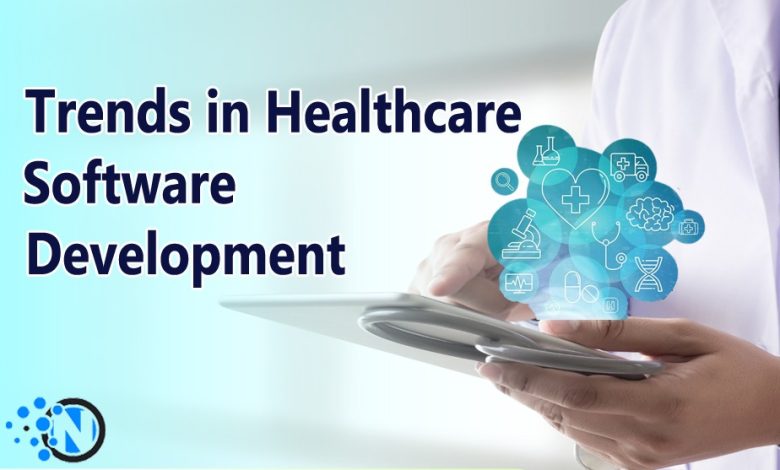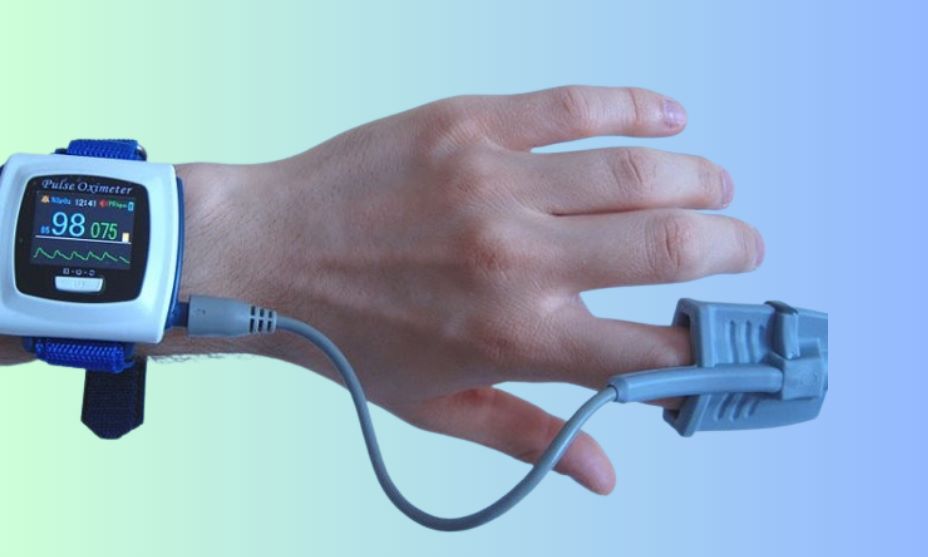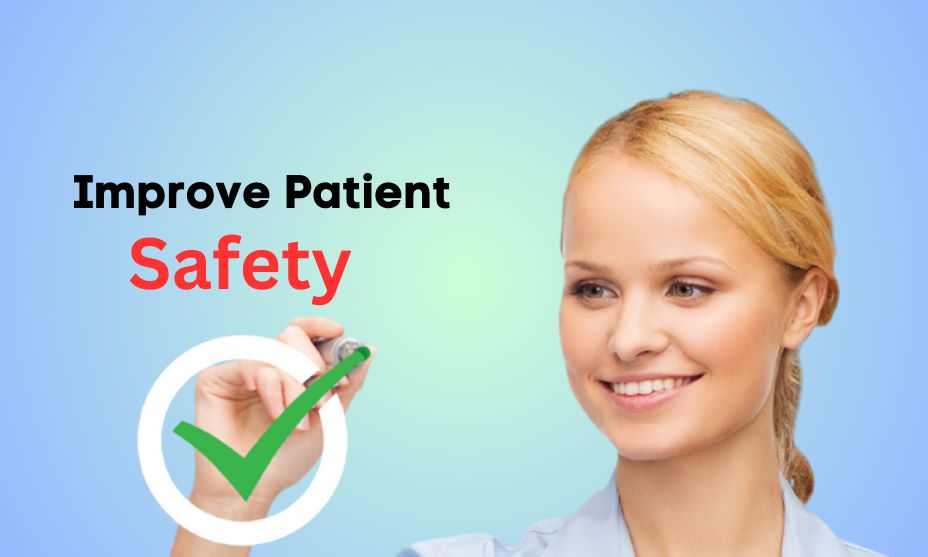Revolutionizing Patient Care – Top Trends in Healthcare Software Development

Medical software rapidly transforms the healthcare industry, making it more efficient, cost-effective, and accessible to patients. Healthcare providers are increasingly adopting medical software solutions to improve patient outcomes, streamline their workflows, and enhance the overall quality of care they provide.
Medical software encompasses a wide range of digital tools, including telemedicine platforms, electronic health record (EHR) systems, wearable medical devices, Artificial Intelligence (AI) and Machine Learning (ML) algorithms. These tools enable healthcare providers to collect, store, and analyze patient data more effectively, leading to better diagnosis and treatment decisions.
This article will explore the top trends in medical software development and their impact on patient care. We will also discuss the challenges that must be addressed in medical software development and the opportunities for innovation in this field. So, let’s dive in!
Top Trends in Medical Software Development
The medical software industry constantly evolves, with new technologies and solutions always emerging. Here are some of the top trends in medical software development that are shaping the future of healthcare:
Telemedicine and Telehealth
Telemedicine and telehealth solutions are becoming increasingly popular, enabling healthcare providers to deliver care to patients remotely. These solutions use digital tools such as video conferencing, messaging, and virtual reality to connect patients with healthcare providers from their homes.
Telemedicine and telehealth have several benefits, including increased access to care, improved patient outcomes, and reduced healthcare costs. With the rise of the COVID-19 pandemic, telemedicine and telehealth have become even more crucial in ensuring that patients receive the care they need while minimizing the risk of exposure to the virus.
Effective promotion and communication through healthcare PR services play a pivotal role in facilitating the adoption and utilization of telemedicine and telehealth solutions.
Electronic Health Records (EHRs)
Electronic health records (EHRs) are digital patient health information records that can be shared across healthcare organizations. EHRs enable healthcare providers to access up-to-date patient information in real time, leading to more accurate diagnoses and treatment decisions.
EHRs also offer several other benefits, such as improved patient safety, increased efficiency, and reduced healthcare costs. By providing a centralized repository of patient information, EHRs enable healthcare providers to coordinate care more effectively and improve patient outcomes.
Wearable Medical Devices

Wearable medical devices are becoming increasingly popular, enabling patients to monitor their health in real time. These devices include smartwatches, fitness trackers, and other wearable sensors that can track various health indicators such as heart rate, blood pressure, and glucose levels.
Wearable medical devices offer several benefits, including increased patient engagement, improved patient outcomes, and reduced healthcare costs. By providing patients with real-time feedback on their health, wearable medical devices can help them take a more active role in managing their health and wellness.
Artificial Intelligence (AI) and Machine Learning (ML)
Artificial intelligence (AI) and machine learning (ML) algorithms are increasingly used in medical software development to analyze large amounts of patient data and identify patterns and trends that may be difficult for healthcare providers to detect independently.
AI and ML have several applications in healthcare, including predicting disease outbreaks, diagnosing diseases, and identifying potential treatment options. By analyzing large amounts of patient data, AI and ML algorithms can help healthcare providers make more informed decisions, leading to better patient outcomes.
Cloud Computing
Cloud computing is becoming increasingly popular in medical software development, enabling healthcare providers to store and access patient data securely and efficiently. Cloud-based solutions offer several benefits, such as increased scalability, reduced infrastructure costs, and improved data security.
Cloud computing also enables healthcare providers to collaborate more effectively, improving patient outcomes. By providing a centralized repository for patient data, cloud-based solutions enable healthcare providers to work together more effectively, leading to improved patient outcomes.
Challenges in Medical Software Development
While medical software development offers many benefits to healthcare providers and patients, it also presents several challenges that need to be addressed. Here are some of the key challenges in medical software development:
Data Privacy and Security

Medical software solutions involve collecting, storing, and transmitting sensitive patient data. It’s essential that this data is kept secure and private to protect patients’ confidentiality and prevent data breaches.
To address this challenge, medical software developers must implement robust data privacy and security measures, such as encryption, firewalls, and access controls. They must also comply with industry standards and regulations, such as HIPAA, to ensure that patient data is handled responsibly.
Interoperability
Interoperability refers to the ability of different medical software solutions to communicate with each other seamlessly. In healthcare, interoperability is critical to ensure that patient data is accessible to healthcare providers across different organizations and systems.
However, achieving interoperability can be challenging due to the different data formats, standards, and protocols used by different systems. Medical software developers need to design interoperable solutions that can work together seamlessly, enabling healthcare providers to access and share patient data more effectively.
User Experience (UX) Design
Medical software solutions must be designed with the end-users in mind, including healthcare providers, patients, and caregivers. However, designing software with a good user experience (UX) can be challenging, especially in a complex and highly regulated industry like healthcare.
To address this challenge, medical software developers must involve end-users in the design process, ensuring their needs and preferences are considered. They also need to conduct user testing and feedback to ensure that the software is easy to use, intuitive, and meets the needs of healthcare providers and patients alike.
Impact of Medical Software Development on Patient Care
Medical software development has significantly impacted patient care, improving the quality of care and enhancing patient outcomes. Here are some of the key ways in which medical software development has impacted patient care:
Improved Diagnosis and Treatment
Medical imaging software solutions, such as the ones developed by Novarad, enable healthcare providers to access and analyze patient data more effectively, leading to more accurate diagnoses and treatment decisions. Additionally, healthcare imaging solutions provide a safe and efficient way to share medical images and records so that patients can access them anytime, anywhere, and easily share them by sending a text message or an email.
Similarly, AI and ML algorithms can analyze large amounts of patient data and identify patterns and trends that may be difficult for healthcare providers to detect independently. This can lead to earlier diagnoses and more personalized treatment options, improving patient outcomes.
Increased Accessibility to Care
Telemedicine and telehealth solutions enable patients to access care from the comfort of their own homes, increasing accessibility to care for patients who may have difficulty traveling to healthcare facilities. This is especially important for patients who live in remote or underserved areas where healthcare services may be scarce.
Wearable medical devices also enable patients to monitor their health in real-time, providing valuable insights that can help them manage their health and wellness more effectively. This can lead to earlier intervention and treatment, improving patient outcomes.
Improved Patient Safety

Medical software solutions can improve patient safety by reducing the risk of medication errors, adverse drug reactions, and other preventable harm. EHRs, for example, enable healthcare providers to access up-to-date patient information and medication lists, reducing the risk of prescribing errors and adverse drug reactions.
Similarly, AI and ML algorithms can analyze patient data and identify potential risks and adverse events, enabling healthcare providers to take proactive measures to prevent harm.
Reduced Healthcare Costs
Medical software solutions can also reduce healthcare costs by improving efficiency and reducing waste. For example, EHRs can streamline workflows and reduce administrative tasks, enabling healthcare providers to spend more time with patients and improving the overall quality of care.
Telemedicine and telehealth solutions can also reduce healthcare costs by reducing the need for expensive in-person visits and hospitalizations. Wearable medical devices can also reduce healthcare costs by enabling earlier intervention and treatment, reducing the need for costly procedures and hospitalizations.
Conclusion
Medical software development is revolutionizing the healthcare industry, enabling healthcare providers to improve patient outcomes, streamline workflows, and reduce costs. The top trends in medical software development, such as telemedicine and telehealth, EHRs, wearable medical devices, AI and ML, and cloud computing, are transforming the way healthcare is delivered, making it more accessible and patient-centered.




